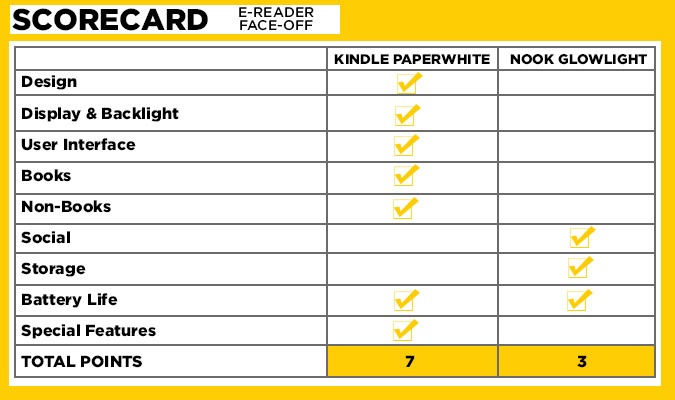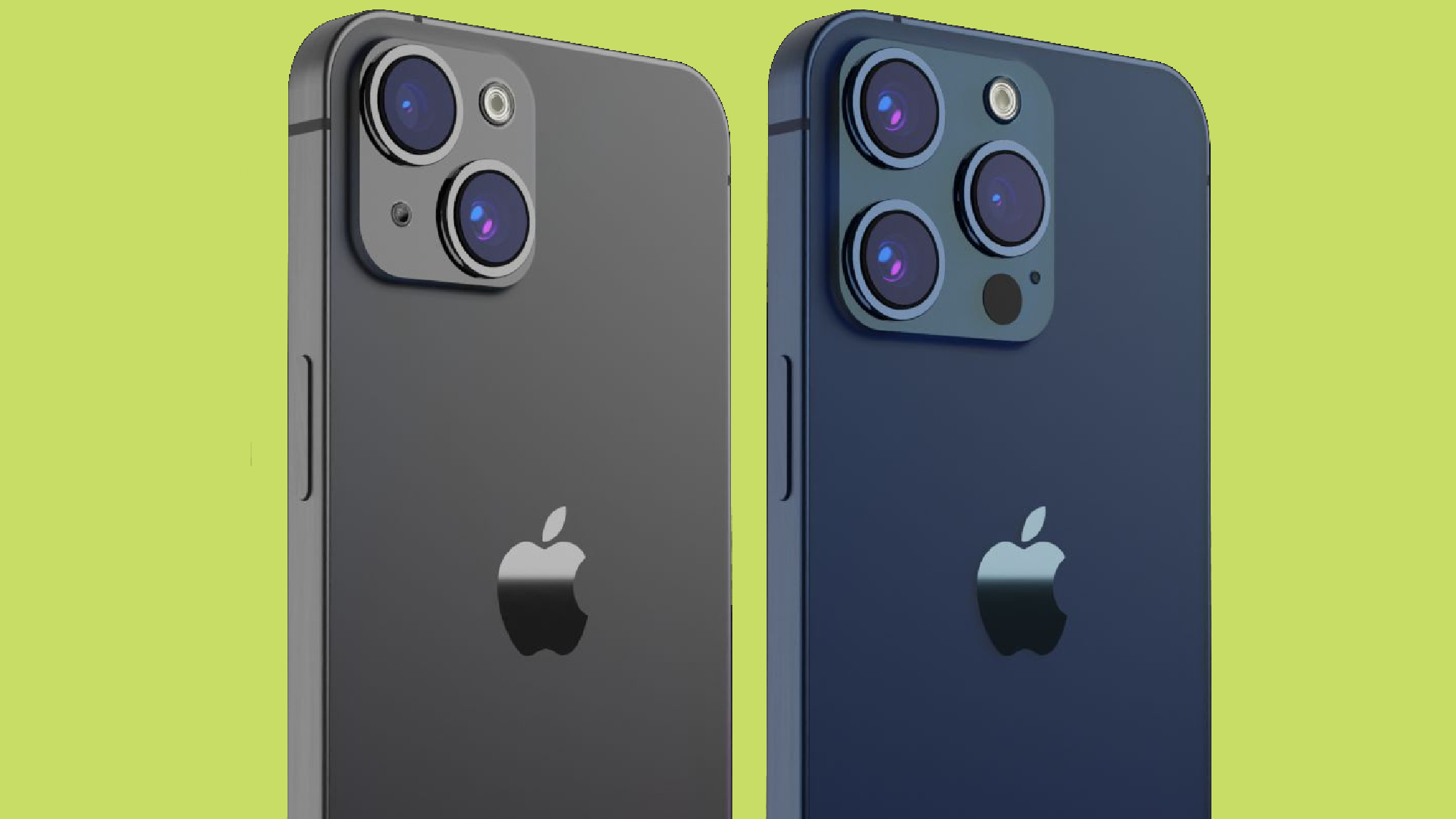Amazon Kindle Paperwhite 2013 vs. Barnes & Noble Nook GlowLight
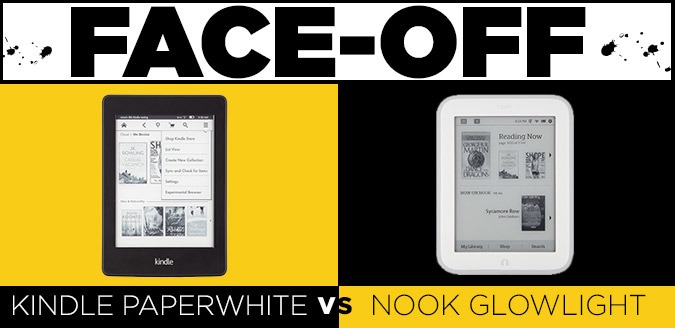
Sure, e-reader sales are down. But that doesn't mean there's no market for e-reading devices. In fact, E Ink Inc. predicts that between 10 million and 15 million gray-scale e-readers will be sold this year. But deciding between the two big names in the business — Amazon and Barnes & Noble — can be tricky, particularly if you're not tied to one company's e-book library.
Both the Nook GlowLight and the Kindle Paperwhite cost $119. Both e-readers offer a lit screen that can easily be seen in direct sunlight or in the dark. Both even let you borrow books from your friends or from the public library. But there are some significant differences in the design, user interface and available content offered by the two devices. We go round-by-round to help you choose the right e-reader.
Design
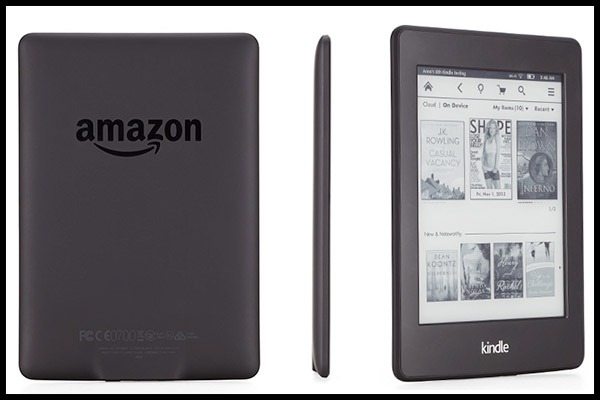
Amazon's Kindle Paperwhite 2013 looks like a black rectangle measuring 6.7 x 4.6 x 0.4 inches, while the Barnes & Noble Nook GlowLight looks more like a white square with gray silicone edging that measures 6.5 x 5 x 0.42 inches. While the white Nook chassis provides a nice break from the plethora of black slates on the market, we actually preferred the starkness of the Kindle's black outline when reading. Also, the trim on the Nook isn't glued on, just snapped into place. That leaves a visible gap that adds a cheapness to its design.
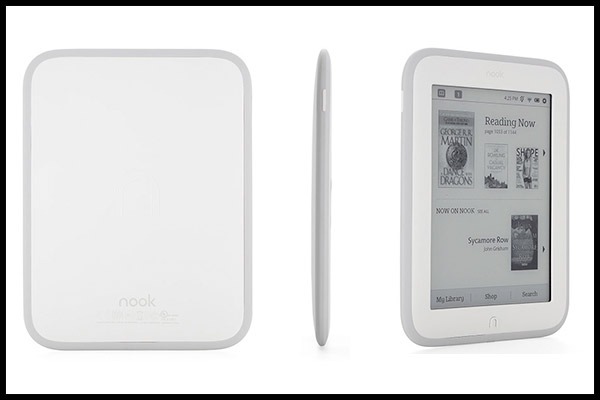
With a weight of just 6.2 ounces, the Nook GlowLight is among the lightest e-readers on the market. That's not to say that the Kindle is heavy, at 7.3 ounces, but the Nook could almost be mistaken for a Frisbee.
The GlowLight features two buttons, and the Kindle has a single bottom-placed power button. The little "N" for "Nook" beneath the display can be used to turn the GlowLight on and off, wake the device from sleep or return to the home screen. On both devices, the power button can also be used to wake up the device.
Oddly, holding down the Kindle power button only offers the options to restart or turn off the screen. There is no power-down option, which the Nook does offer. The GlowLight also comes with another feature that the Paperwhite does not offer: a built-in anti-glare screen protector on top of the 6-inch display. However, in direct sunlight, we didn't notice a difference between the two screens.
Get The Snapshot, our free newsletter on the future of computing
Sign up to receive The Snapshot, a free special dispatch from Laptop Mag, in your inbox.
Winner: Amazon Kindle Paperwhite. We like that the Nook GlowLight is superlight and that it can shut down all the way. However, we prefer the Paperwhite's black frame, which offers a more premium look.
MORE: Amazon Kindle Fire HDX vs. Google Nexus 7: Which Tablet Is Better?
Display & Light
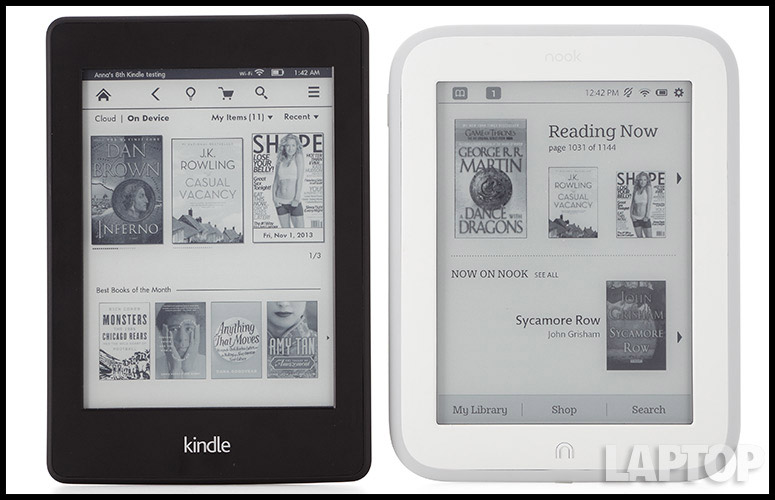
Both the Kindle Paperwhite and the Nook GlowLight feature 6-inch (1024 x 768-pixel resolution), 212-ppi screens that display 16 levels of gray scale. What makes these two panels different is their lighting.
With an average display brightness of 333 lux, the Paperwhite's display is much dimmer than the Nook GlowLight's score of 490 lux. However, the measurements that we take — from the middle and all four corners — were much more uniform on the Paperwhite.
When viewing "The Casual Vacancy" by J.K. Rowling on the new Kindle Paperwhite and new Nook GlowLight with lights at 100 percent, we preferred the uniform light of the new Kindle, but the Nook's type appeared slightly sharper. When viewing a picture of Kate Hudson on the Paperwhite, we noticed her skin tone looked much more natural and better defined than on the Nook GlowLight.
Page turns were swift and smooth. In a side-by-side comparison with the Kindle Paperwhite, the Nook was a hair slower. However, gone is the traditional full-page flash that used to accompany every third page turn.
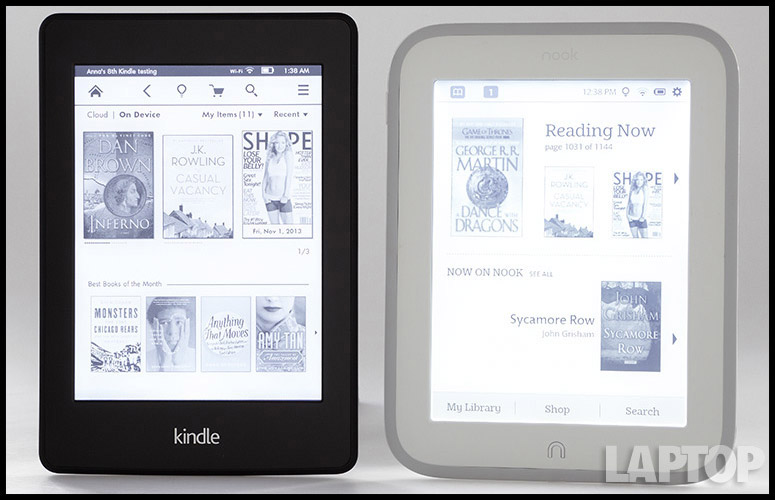
Barnes & Noble has always offered a solid E Ink reading experience, and that hasn't changed on the GlowLight. However, when we compared it side by side with the Kindle Paperwhite, we preferred the black edging and more even light on the Amazon device.
Winner: Amazon Kindle Paperwhite. Sure, the Nook GlowLight sports a powerful light, but the disparate levels of brightness were distracting.
MORE: Game Changer Awards - The Most innovative Tech of 2013
User Interface
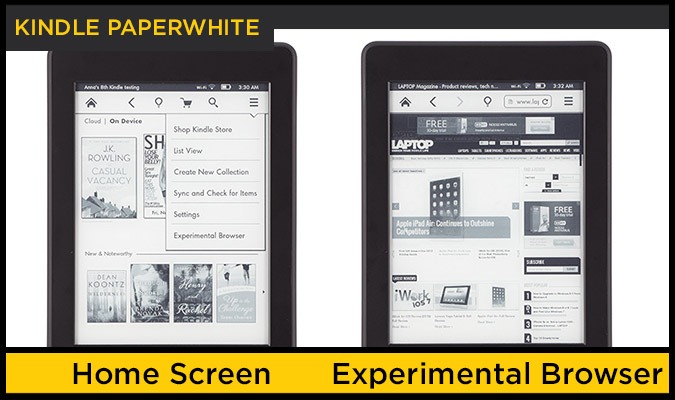
The home screens on the Paperwhite and GlowLight look very similar at first glance, but there are some subtle differences. Both offer the time, settings, your three most recently read pieces of content, search and access to the store. But Barnes & Noble manages to keep things stark-looking, while Amazon merely appears to offer more menu options. We do like that Kindle offers four book suggestions at the bottom of the page, whereas Nook offers just one.
But looks can be deceiving: In reality, the only thing that you can do quickly on the Paperwhite that you can't do on the GlowLight is open the Experimental Browser. But the Nook has no browser. You can also sort your library by books or newspapers, cloud or device with just two taps on the Kindle. It takes three taps to do the same on Nook.
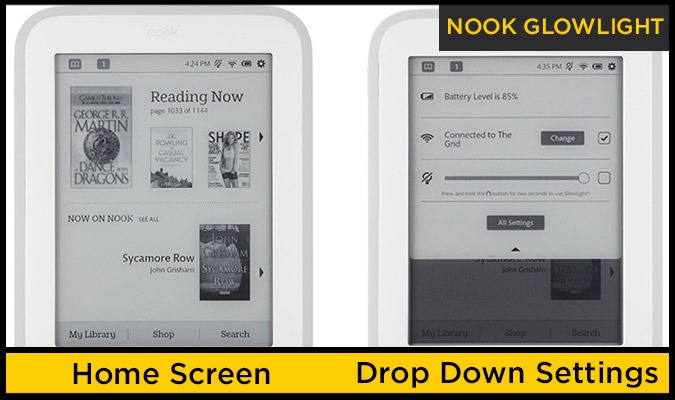
Sadly, neither device offers physical page-turn buttons. Page turns were nearly instantaneous on both devices, but when opening a book or magazine for the first time, we noticed a delay of a second or two. The Nook seemed a hair slower, but not enough to be a distraction.
Unfortunately, the Nook GlowLight search function is flawed. No matter the section from which you're browsing, searching for a phrase brings up results from the entire catalog, not just books or magazines. And the results you get don't always make the most sense.
For instance, we couldn't specify magazines when searching for "Time." And the well-known publication doesn't show up on the first page of results. Instead, the first result was for a magazine called "Tea Time." When we did the same search on Kindle, the first result was "Time magazine."
Winner: Amazon Kindle Paperwhite. While the Nook GlowLight interface is more attractive, we found the Paperwhite faster and more useful when it came to search.
Books
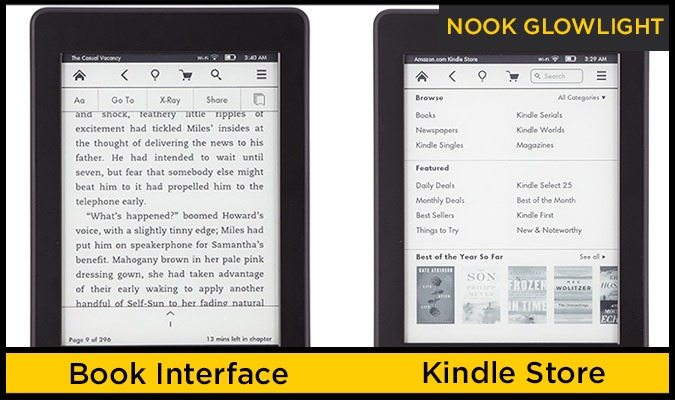
Not only does Amazon offer millions of books, newspapers and magazines, but it also has been rolling out more and more exclusive titles, which now number about 400,000, up from 180,000 last year. However, Amazon won't say exactly how large its library is. The Kindle Paperwhite offers 2GB of storage.
Amazon also offers great deals on content, boasting more than 1.7 million titles for $9.99 or less, and millions of out-of-copyright books for free. Plus, if you subscribe to the Amazon Prime membership service (a one-month free trial, followed by $79 per year), you can freely borrow from among 180,000 e-books. Some big-name options include the "The Hunger Games" by Suzanne Collins and the James Bond series by Ian Fleming. Plus, with the new Kindle Matchbook feature, customers can purchase Kindle editions of print books they purchased recently or as far back as 2007, for $2.99 or less.
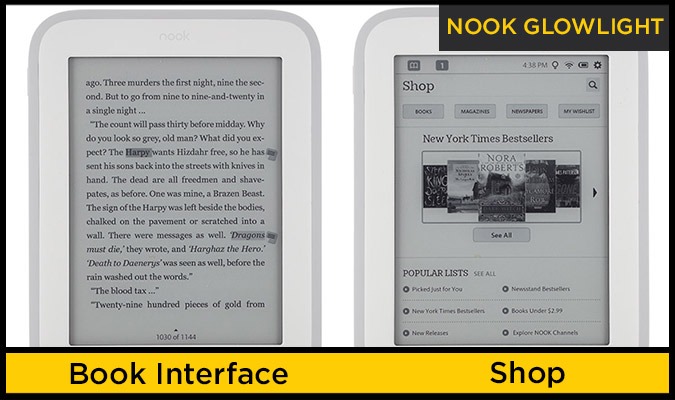
Barnes & Noble says it offers 3 million titles in its Nook store, 101 of which cost less than $2.99. About 2,000 of those will fit into the 4GB of internal storage on the GlowLight, which is double the storage offered by the Kindle. Also in Barnes & Noble's favor is that the Nook supports the EPUB file format, which means owners won't be limited to Barnes & Noble's store. Books from Google, Kobo and Sony will work, too.
During our audit of both stores, we found that Nook owners could expect to pay 19 cents more than Kindle owners per book, on average, if Nook carries the book. We looked at the 25 New York Times best sellers for e-book fiction. Amazon offered all 25, but Barnes & Noble was missing one. In most cases in which both stores offered the same book, the prices were the same. We found three discrepancies, all less than $0.50.
Winner: Amazon Kindle Paperwhite. The lending library that Amazon Prime members can access puts the Paperwhite over the top in this category.
MORE: Tech Support Showdown 2013
Magazines, Newspapers & Documents
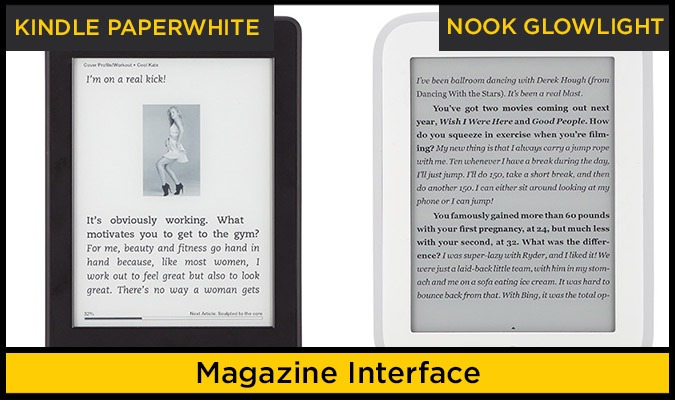
Amazon's e-reader supports DOC/DOCX, PDF, TXT, HTML, JPEG, GIF and PNG files on the Kindle Paperwhite. Barnes & Noble's e-reader only supports PDF-formatted documents, plus BMP, GIF, JPEG and PNG. We were disappointed not to find RTF, DOC, TXT or HTML file support on the Nook GlowLight. Assuming you have a document in the right format, you can load it onto either reader easily.
Kindle Paperwhite owners can subscribe to 172 newspapers worldwide, including "USA Today" and "The Boston Globe," starting at around $5.99 per month. Magazine subscriptions for 172 titles, such as "Shape" and "The Smithsonian," start at around $1. In comparison, Barnes & Noble offers 2,082 magazines and 515 newspapers, including the titles listed above, except "The Smithsonian."
When reading a recent issue of "Shape" on both e-readers, we much preferred the design and accessibility found on the Paperwhite. Whereas Amazon kept as many photos as large and embedded as possible, Barnes & Noble tried to strip them all out. It's true that this sometimes means there's less text on the page, but part of reading a periodical is enjoying the photos that illustrate the stories.
Winner: Amazon Kindle Paperwhite. This is a very tight round, which could go either way. However, ultimately, the newspaper and magazine selection doesn't mean much if those documents are unsatisfying to read.
Social
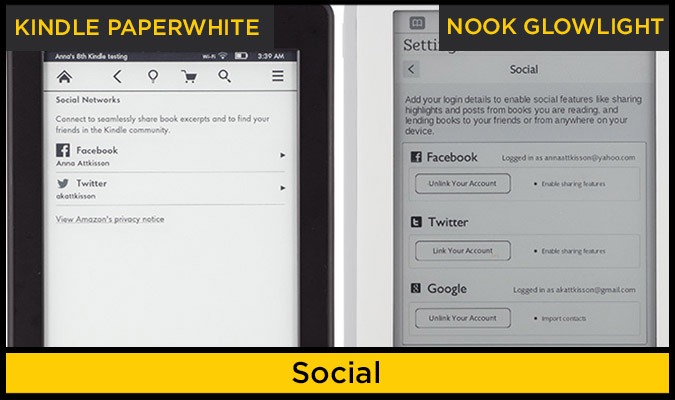
Amazon and Barnes & Noble can connect and share text selections from your e-books to your Twitter or Facebook account. The best looking of these sharing options is the Facebook option on the Nook GlowLight. Barnes & Noble adds a thumbnail of the book cover to the post, which makes it more visually appealing.
Unlike on Nook, the Kindle Paperwhite will prompt you to rate a book when you're on the final page, as well as to share your thoughts via social networking. Amazon is also working to deploy Goodreads, the world's largest e-reading community, to Kindles everywhere via an over-the-air-rollout in the next couple of months. That means avid readers can connect with more than 20 million other readers to see what they are reading, sharing and highlighting.
On the other hand, the Nook GlowLight can tap into your Google+ friends to add to your lending-library potential from your Nook Friends. Amazon doesn't offer this feature. Through Nook Friends, you can easily see who has books you can borrow. We didn't find this feature particularly useful because it offers such a limited user base. You can invite friends to join, but they'll still need to be Nook owners.
Winner: Barnes & Noble Nook GlowLight. We like that Amazon is working to incorporate Goodreads, but until that's a reality, this round goes to the Nook GlowLight.
Storage
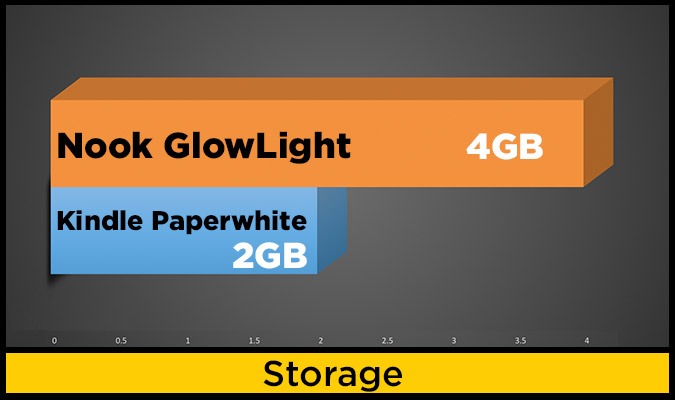
With 2GB of storage space, you should be able to hold about 1,100 e-books at any given time. In comparison, the Nook GlowLight offers 4GB of storage that promises to hold 2,000 books. Neither e-reader offers a microSD card, and both back up to the cloud.
Winner: Barnes & Noble Nook GlowLight. We're not sure who needs more than 2,000 books on the same device simultaneously. However, this round has to go to the e-reader with more memory.
MORE: Top Tablet Gifts
Battery Life
According to Amazon, the Kindle Paperwhite should last for up to eight weeks on a single charge. That estimate is based on a half hour of reading per day with wireless off and the light set to 10.
Alternatively, Barnes & Noble claims the Nook GlowLight will last eight weeks on a charge, based on a half hour of reading with one page refresh per minute, with GlowLight on the default (half) brightness.
Winner: Tie.
Special Features
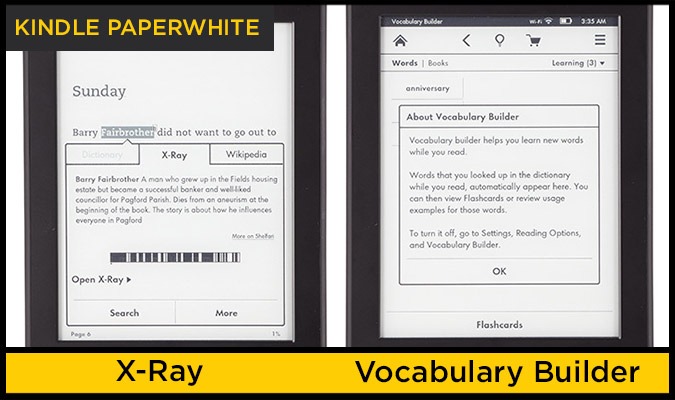
Amazon jam-packed the new Kindle Paperwhite with hidden abilities and secret superpowers. Yes, you can still play games, keep to-do lists and surf the Web on your Kindle, which you can't do on the Nook. But did you know the Paperwhite has some parental controls?
With the Kindle, parents can restrict access to the browser, the store and your Amazon content stored in the cloud. When the Kindle Store is locked, you can still buy books on Amazon.com and have them delivered to your device. The only parental control offered on the Nook is a password requirement for purchases.
Amazon plans to add Kindle FreeTime via an over-the-air rollout. Currently found on Kindle Fire tablets, FreeTime will give Paperwhite parents the ability to hand select books that are appropriate for their children's age range. Parents will also be able to hand out achievement badges, thanks to a built-in progress report that keeps parents updated on total time spent reading, number of words looked up and books finished.
Amazon still exclusively offers the X-Ray feature to its e-books, which enhances the reading experience by giving you a CliffsNotes-like look at the bones of a book. To that, the e-book giant has added Kindle Page Flip, which lets you go page by page, scan by chapter or just skip to the end of the book without losing your place. This is particularly helpful for books with maps or genealogy trees that you want to repeatedly reference while reading. The map of Beyond the Wall in "A Dance with Dragons" is one such instance where this feature is helpful.
Taking the academic angle even further, Amazon has added a vocabulary builder that lets you create a list of flash cards for yourself based on words you look up. Plus, In-Line Footnotes instantly brings up footnotes without losing your place in an e-book.
What Barnes & Noble can offer readers that Amazon can't is free in-store technical assistance. This could be extremely helpful for people who aren't all that familiar with technology. Plus, while Nook owners are in one of the company's 700 stores nationwide, they enjoy free Wi-Fi. That is in addition to the free Wi-Fi at AT&T hotspots across the United States (more than 24,000 so far).
Winner: Amazon Kindle Paperwhite. Amazon has simply kept its foot on the gas when it comes to innovation and the reading experience in a way that Barnes & Noble has not.
OVERALL WINNER: Amazon Kindle Paperwhite.
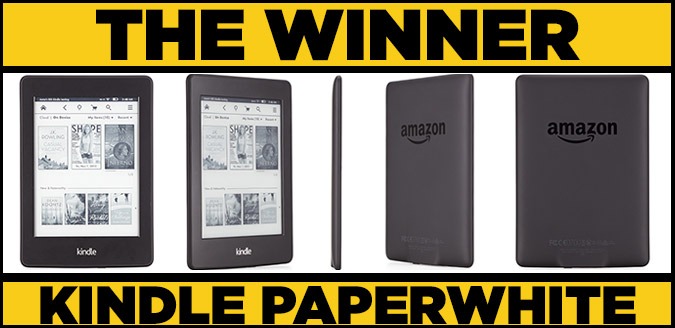
By the math alone, it's a no-brainer to name the Amazon Kindle Paperwhite the winner of this showdown. Amazon's e-reader took six of 10 categories and tied in one: battery life. We did like the Nook's social aspect (at least until Amazon rolls out Goodreads) and the larger storage space. However, the Nook GlowLight simply couldn't compete when it came to special features or backlight. We even prefer the look of the Kindle to that of the white Nook. With the Kindle Paperwhite 2013, Amazon simply makes the best e-reader on the market.
